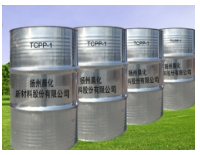Thermosetting resin thermosetting resin includes epoxy resin, phenolic resin, polyurethane, unsaturated polyester resin, etc. This kind of resin needs multi-component blending when it is applied, so the flame retardant can be added at the same time and mixed evenly by rapid stirring. After mixing, the curing reaction is carried out at a certain temperature. After curing, a thermosetting resin material with flame retardancy can be formed.
Rubber rubber can be used as wire and cable materials, conveyor belt materials, etc. it has high requirements of flame retardant. Flame retardant rubber is prepared by blending raw rubber, flame retardant and various additives, then plasticizing, blending and curing.

The coating is also made up of many components. Therefore, in use, the flame retardant and its composite components are usually mixed with the components forming the coating to form the coating, and then coated on the surface of steel structure or wood structure and other materials to form the flame retardant coating.
Fibers include chemical fibers such as polyester, polypropylene, acrylic, spandex, and natural fibers such as cotton and silk. The chemical fiber can be spun with flame-retardant pellets before being made into fibers. The obtained fiber has flame retardant function. In addition, flame retardant functionalization can be achieved by finishing fibers and fabrics. The fiber fabric is impregnated in the flame-retardant finishing solution. The flame-retardant component can be reactive, react with the functional groups on the fiber, bond the flame-retardant structure to the fiber, and the flame-retardant component can also be physically adhered to the fiber. However, due to the weak binding force between the flame-retardant component and the fiber, the physical adhesive flame-retardant component has poor water washing resistance. It leads to the loss of flame retardant function of the fiber after several times of washing.
Wood wood is a flammable material. However, as a natural material, it has the characteristics of environmental protection, regeneration and biodegradation. Impregnation is usually used for wood fire retardation. That is to say, through high negative pressure, the gap in the wood and the air in the fiber pipe are drawn out, and then the wood is immersed in the flame-retardant liquid, which is pressurized to make the flame-retardant components enter into the wood, and the flame-retardant wood materials are formed after drying.
Since the intrinsic flame retardant materials do not need further flame retardant treatment, the following contents are all for additive flame retardant materials. Flammable materials can generally include thermoplastic resin, thermosetting resin, rubber, paint, fiber (natural fiber and artificial fiber), wood, etc. The above flammable materials can be modified into flame retardant materials in the following ways.
Thermoplastic resin thermoplastic polyester resin includes common polyolefin, polyester, polyamide, etc., such as polyethylene, polypropylene, polystyrene, ABS (acrylonitrile butadiene styrene copolymer), polyethylene terephthalate (PET), polybutylene terephthalate (PBT), polycarbonate (PC), nylon 6, nylon 66, etc. For the above materials, they are extruded and granulated in a screw extruder by melt blending with the corresponding flame-retardant additives to make flame-retardant pellets and complete the flame-retardant modification. But generally, flame retardant additives have pertinence, that is, the specific flame retardant acts on a certain kind of resin. There are few kinds of flame retardant that can be widely used, so it usually needs careful selection, experiment and composite application.